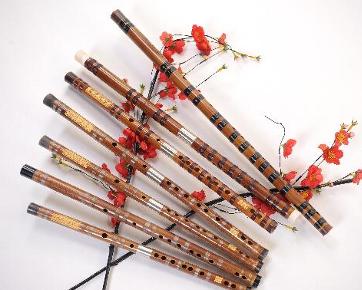What are the steps to learn to play the flute
Dizi is the oldest Han musical instrument discovered so far, and it is also the most representative and most nationally characteristic wind instrument among the Han musical instruments.

Steps to learn to play the flute
1. First know the flute and master the structure:
The bamboo flute is made of a bamboo tube, the inside is hollow into an inner chamber, and the outer is cylindrical. There are 1 blow hole, 1 membrane hole, 6 sound holes, 2 fundamental sound holes and 2 auxiliary holes in the pipe body. sound hole.
2. Master the correct way to hold the flute:
"The Spring and Autumn of Flute Art" - In the book, a verbal decision on the essentials of posture is put forward: the air door is straight, the body of the flute is flat, the head should be straight, and the chest should be straight. The thumb and the little finger support each other, don't let the flute and the willow shake the gold.
3. Flute film:
First, cut the membrane in half, cut into small rectangular pieces, and then gently knead it into a small ball with the thumb and index finger of the right hand. The film is twisted into many fine wrinkles by twisting, and then gently unfolded. After the film is restored to its original state, use the thumb and index fingers of both hands to gently stretch it forward, back, left and right several times.
4. Fingering practice, master how to change fingers:
When breathing and mouth movement are coordinated, there must be fingers to open and close the sound hole, so that sounds of different heights and lows can be produced. Without the cooperation of the fingers, breathing and mouth shape would be meaningless. It is best for beginners to master one type of fingering, and then learn other blowing methods when they have the foundation.
5. How to play the flute and lip sync:
The expansion and contraction of the lips is the result of the overall expansion and contraction of the facial muscles. Facial muscles connect to the lips through the corners of the mouth. Therefore, when playing, the force of the mouth muscles is mainly concentrated on the corners of the mouth, not in the center of the lips, and the lips only need to be properly contracted and supported. If the main force is concentrated on the lips, the gap between the lips will inevitably be narrowed, and the exhaled air cannot be full and plump. The flute generally requires moderate mouth strength and balanced strength on both sides of the mouth. The corners of the mouth on both sides are slightly retracted (like when smiling), stick to the gums, and use the corners of the mouth to
When the strength of the contraction, the controlled lips stretch back to the sides. Is - a complex of criss-crossing muscles. Its different movement modes in the oral cavity have various effects on the flute sound. In particular, it acts as a "switch" for exhalation.
 渝公网安备 50010702504639号
渝公网安备 50010702504639号